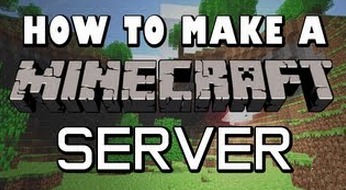Set up a game server
Set up a simple local game server with an adult on your computer to host friends for multiplayer play, learning networking and teamwork.



Step-by-step guide to set up a local game server
How to Make a Minecraft Bedrock Server 2021 | Start to Finish Set-up
Step 1
Pick one game that supports a local server and that you and your friends like.
Step 2
Ask an adult to help you set up the server and agree on a time to play.
Step 3
With the adult, install or update the game so it is ready to run.
Step 4
Decide with the adult how many players will join and write simple server rules.
Step 5
With the adult, open the game and create a new world or start the server setup.
Step 6
With the adult, enable “Open to LAN” or start the server program and copy the server address.
Step 7
Ask the adult to allow the game through the computer firewall if the game asks for permission.
Step 8
Make sure all friends connect their devices to the same home Wi‑Fi network.
Step 9
Tell your friends the server name or address and ask them to join the game.
Step 10
Have everyone move around for a minute to check that the connections work.
Step 11
Choose team roles and a simple goal so everyone knows how to work together.
Step 12
Play together and work on your goal as a team for at least 15 minutes.
Step 13
Save the world and ask the adult to close the server safely when you finish.
Step 14
Share your finished creation and a short story about your teamwork on DIY.org.
Final steps
You're almost there! Complete all the steps, bring your creation to life, post it, and conquer the challenge!


Help!?
If we don't have a reliable home Wi‑Fi network or enough devices, what can we use instead so everyone can join the server?
Connect all players to the same router with Ethernet cables and a small network switch or let the adult create a mobile hotspot for everyone to join the network, then follow the step to copy the server address.
What should we check if friends can't join after you enable “Open to LAN” or start the server program?
Have the adult confirm the game is updated, allow the game through the computer firewall, verify every device is on the same network, and re-copy the server address after restarting the server.
How can this activity be adapted for younger or older kids?
For younger kids the adult can do the install/update and server-creation steps, simplify the written server rules and make goals 10–15 minutes long, while older kids can follow the full setup with supervision, create detailed rules, team roles, and longer 30–60 minute missions.
What are simple ways to extend or personalize the server game after everyone connects and checks movement?
Let players design custom team roles and server rules, add mods or resource packs during the 'create a new world' step, take screenshots for the DIY.org story, and save a backup of the world before the adult closes the server.
Watch videos on how to set up a local game server
How To Make A Minecraft Server - Full Guide
Facts about computer networking for kids
🤝 Hosting helps teamwork — the host often coordinates rules, roles, and play schedules so everyone has fun.
🕹️ Many multiplayer games use dedicated game servers so players share one world — some official servers can host thousands of people at once.
🔌 Port forwarding is like opening a tiny door in your router so friends from outside your home can join your server.
🧩 Troubleshooting a server teaches real computer skills: IP addresses, firewalls, and checking resource limits.
🌐 You can run a local game server over a LAN without the internet, making it great for safe, low-lag play with nearby friends.
How do I set up a simple local game server with an adult on my computer?
What materials and software do I need to host a local game server?
What ages are suitable for setting up a game server with adult help?
What are the safety tips and benefits of hosting a local game server?


One subscription, many ways to play and learn.
Only $6.99 after trial. No credit card required



